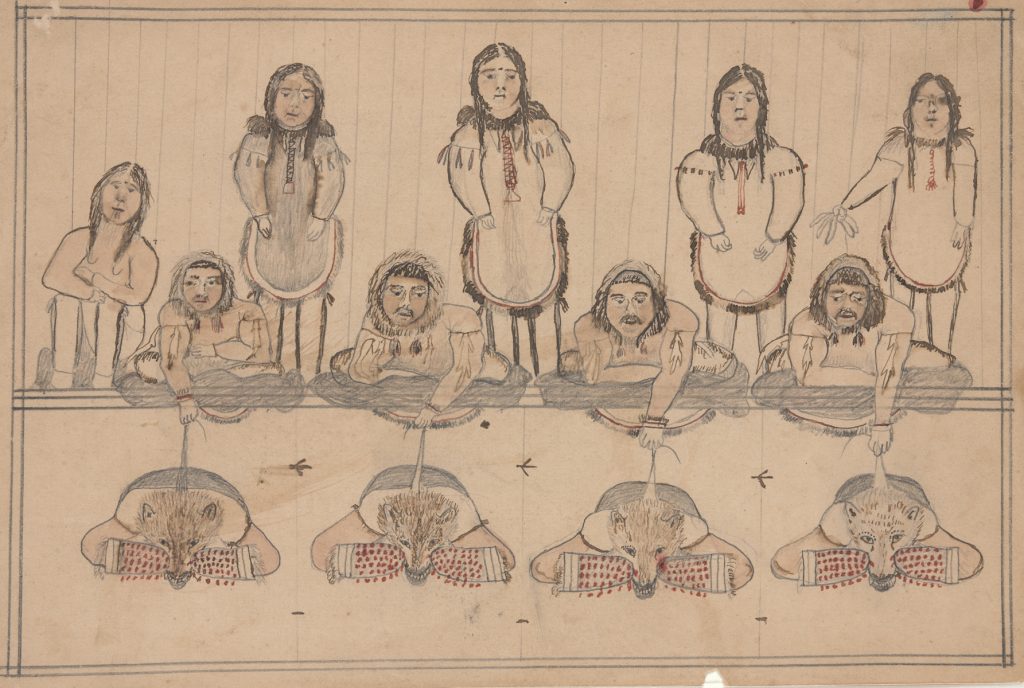Written by Curator of Art Properties Roberto C. Ferrari.
The Department of Art Properties recently partnered with colleagues in Avery Architectural & Fine Arts Library to conduct comparative research and write brief documentation on Native American works of art in the Columbia University collection. This collaborative effort assisted Art Properties with creating a detailed inventory checklist that was then filed with the federal government to be in compliance with the Native American Graves Protection and Repatriation Act (NAGPRA). In 1990, Congress enacted NAGPRA to assist federally-recognized American Indian and Alaska Native tribes in repatriating human remains and cultural heritage objects that had been misappropriated by archaeologists and collectors and were now housed in museums, galleries, and educational institutions nationwide. While the Art Properties collection does not hold any human remains of indigenous Americans, the collection does include artworks and cultural heritage objects, some of which are ritualistic, made by American Indians and Alaska Natives from numerous tribal nations. This project was a significant step forward in the Libraries’ ongoing efforts to properly document and catalog important hidden collections and to begin the work needed to assist indigenous Americans in their efforts at reclaiming their own history and heritage.

Art Properties is responsible for the stewardship of Columbia’s art collection of over 13,000 art objects from around the globe, representing all time periods from antiquity to the present, brought together over 200 years almost exclusively through gifts and bequests from donors. As part of Columbia University Libraries, Art Properties supports the educational mission of the University, welcoming students, faculty, and outside researchers to utilize the collection for curricular study, educational programs, exhibitions, and publications. While the collection has strengths in American art, East Asian art, and archaeological artifacts, among the holdings are two distinct collections of about 500 objects made during the nineteenth and early twentieth centuries by Native American artists. The first of these was organized in the 1920s and 1930s by Professor Wendell T. Bush (1866–1941), a Columbia philosophy professor interested in global religions and rituals. His collection was maintained by the Department of Religion until it was transferred to Art Properties around 1980. The second acquisition took place in 1997 when 63 Native American works of art, including ceramics and textiles, were approved by the Provost-appointed Committee on Art Properties as a gift from Columbia alum Stanley B. Stein and his wife Caroline.
Preparation of the inventory checklist and preliminary consultation was begun by Art Properties in the past, but the COVID-19 pandemic and the need to work remotely created a unique opportunity where Avery Library staff could work online collaboratively to complete the first important part of the project. The submission of the inventory checklist to the NAGPRA office also led, with the assistance of Original and Special Materials Cataloging (OSMC) and Library Information Technology (LIT), to the release in CLIO and WorldCat of item-level records representing every Native American object in the collection. While the Libraries have made great strides at unhiding collections for use by individual researchers, this inventory checklist and cataloging project have now also provided institutional transparency for members of federally-recognized American Indian and Alaska Native tribes to discover what Columbia holds in the University’s Art Properties collection and to support their NAGPRA-related efforts.

The Libraries anticipate the next step to be direct consultation with specific tribal nations. While this will benefit indigenous Americans in their potential repatriation efforts, it will also offer the Libraries a collaborative opportunity in two specific ways: learning and applying more respectful approaches to collection stewardship of these objects; and reenvisioning ways of describing these objects with diversity and inclusiveness in mind, such as through the application of the CARE Principles for Indigenous Data Governance for records in CLIO and other online resources. Most importantly, the Libraries will participate, if required and in collaboration with other departments at Columbia, in the potential repatriation of sacred and/or ritualistic objects as defined by NAGPRA. As part of this consultation work, a curated selection of Native American objects will be displayed with culturally responsive information in a forthcoming multi-part Art Properties exhibition at the Miriam and Ira D. Wallach Gallery, Lenfest Center for the Arts, opening in December 2021.